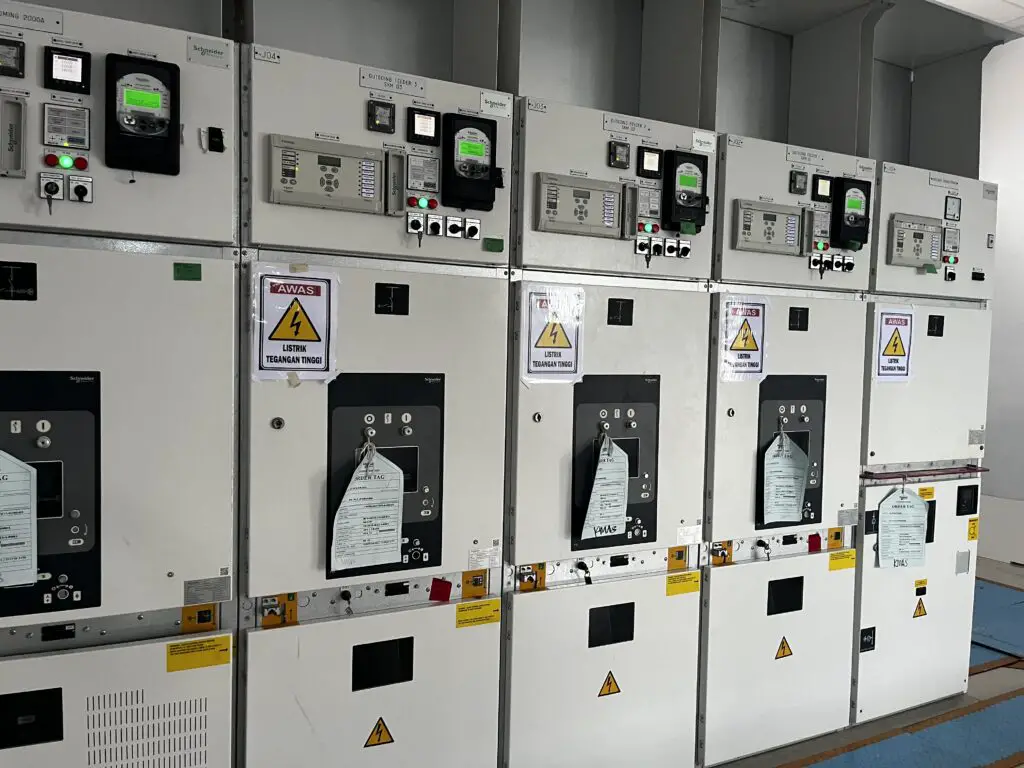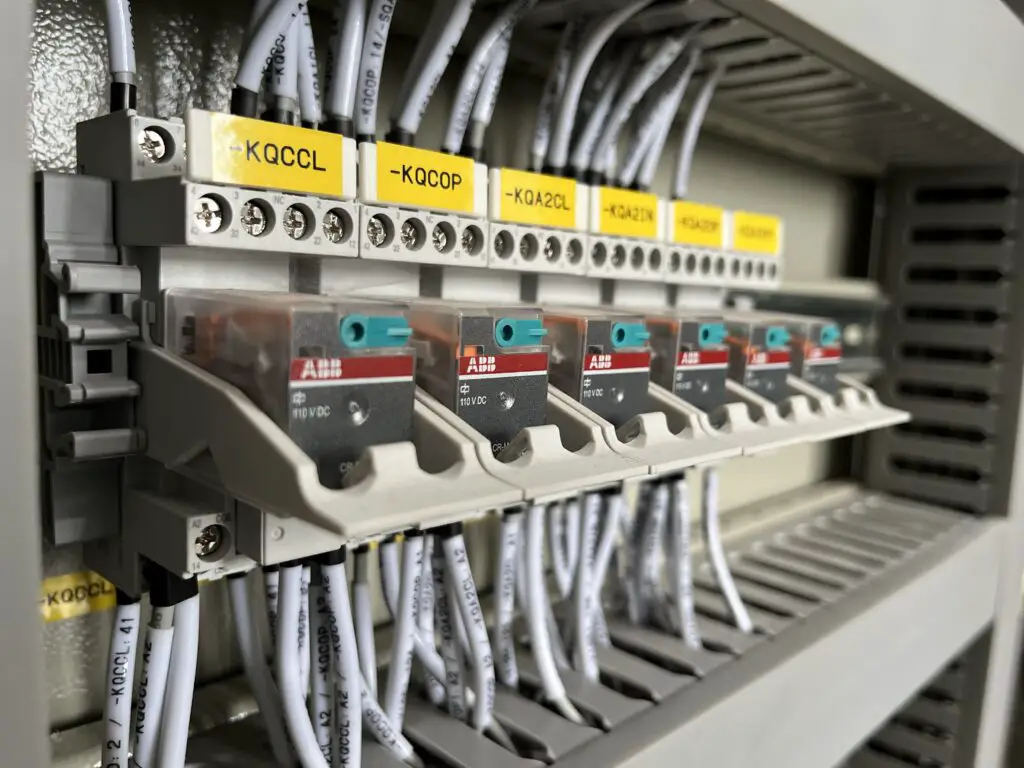
How to Manage Power Distribution System? A power distribution system refers to the network of electrical equipment and components that are used to distribute and control the flow of electricity from a power source to various loads and consumers. The following are some steps to effectively manage a power distribution system:
How to Manage a Power Distribution System?
- Planning and Design: Careful planning and design of the distribution system is essential to ensure that the system is capable of meeting the current and future electrical demands. The design should take into account the load requirements, system voltage, and the location of the loads and distribution equipment.
- Load Management: Effective load management is critical for the stability and reliability of the distribution system. Load management techniques, such as load shedding and peak shaving, can be used to control the demand on the system and prevent overloading.
- Monitoring and Control: Continuous monitoring and control of the distribution system is necessary to ensure that the system is operating efficiently and safely. Automated monitoring and control systems can be used to detect and respond to changes in the system, such as changes in load or fault conditions.
- Maintenance: Regular maintenance and inspection of the distribution equipment is necessary to ensure that the equipment is operating correctly and that potential problems are identified and addressed before they cause problems. Maintenance should be performed according to the manufacturer’s recommendations and should include checks of the equipment’s insulation, connections, and grounding.
- Upgrades and Improvements: As the demand for the distribution system changes, upgrades and improvements may be necessary to ensure that the system remains reliable and efficient. Upgrades may include the installation of new equipment, the expansion of existing equipment, or the replacement of aging equipment.
These are some of the key steps for managing a power distribution system. A well-designed and well-maintained distribution system is essential for ensuring the reliable and efficient delivery of electricity to consumers.
Read Also: Tokamak ST40 Future Power Source

Key of Managing Power Distribution System
Power distribution management involves various processes and activities aimed at ensuring the efficient and reliable delivery of electricity from the power source to the various loads and consumers. Here are some key aspects of power distribution management:
- Network Design: The first step in power distribution management is the design of the distribution network, which involves planning and modeling the electrical system. The design should take into account the location of the loads, the voltage requirements, and the type of equipment that will be used to distribute the power. This includes the selection of transformers, switchgear, and other electrical components.
- Load Management: Effective load management is critical for the stability and reliability of the power distribution system. Load management techniques, such as load shedding, load balancing, and demand response programs, can be used to control the demand on the system and prevent overloading. This helps to ensure that the system can operate safely and efficiently, even during periods of high demand.
- Monitoring and Control: Power distribution management also involves monitoring and controlling the electrical system to detect and respond to changes in the system. Automated monitoring and control systems can be used to detect changes in the system and respond to conditions such as changes in load, faults, and equipment failures. This helps to ensure that the system is operating safely and efficiently.
- Maintenance and Upgrades: Regular maintenance and upgrades are necessary to ensure the reliability and efficiency of the power distribution system. Maintenance activities may include the inspection and testing of electrical equipment, the replacement of aging or damaged equipment, and the installation of new equipment to meet changing demands. Upgrades may include the installation of new equipment or the expansion of existing equipment to accommodate increased demand.
- System Reliability: Power distribution management also involves ensuring the reliability of the system, which means minimizing the likelihood of outages and ensuring that the system can recover quickly from any interruptions that do occur. This may involve the implementation of backup power supplies, the use of redundancy in the electrical system, and the development of contingency plans for responding to system failures.
These are some of the key aspects of power distribution management. The goal of power distribution management is to ensure that the electrical system is operating efficiently and reliably, while also minimizing the risk of outages and ensuring that the system can recover quickly from any interruptions that do occur.
Read Also: Things to Consider in Electrical Project Management
advanced distribution management system market
The advanced distribution management system (ADMS) market is a rapidly growing segment of the energy and utilities industry. Here are some key trends and drivers of the ADMS market:
- Increasing Demand for Reliable Power: The increasing demand for reliable power and the need to manage power outages more effectively is driving the growth of the ADMS market. ADMS solutions provide real-time monitoring and control of the power distribution system, enabling utilities to respond quickly to changes in the system and prevent outages.
- Smart Grid Implementation: The implementation of smart grid technology is also driving the growth of the ADMS market. Smart grid technology enables utilities to manage the distribution of power more effectively and improve the efficiency of the power grid. ADMS solutions play a critical role in this by providing real-time data and analytics on the distribution system, enabling utilities to make informed decisions about how to manage the system.
- Government Support: Government support for the development and implementation of advanced distribution management systems is also contributing to the growth of the market. Many governments are offering incentives and funding for the development of smart grid and ADMS solutions, which is driving investment in the sector.
- Technological Advancements: Technological advancements in areas such as artificial intelligence (AI), machine learning, and the Internet of Things (IoT) are also driving the growth of the ADMS market. These technologies are being integrated into ADMS solutions, enabling utilities to monitor and control the power distribution system more effectively and make more informed decisions.
- Growing Renewable Energy Generation: The growth in renewable energy generation is also driving the growth of the ADMS market. Renewable energy sources such as wind and solar power can be more difficult to integrate into the power grid, but ADMS solutions can help to manage the integration process and ensure that the system is operating efficiently.
These are some of the key trends and drivers of the ADMS market. The ADMS market is expected to continue to grow in the coming years, driven by the increasing demand for reliable power, the implementation of smart grid technology, and the growth in renewable energy generation.

You must be logged in to post a comment.